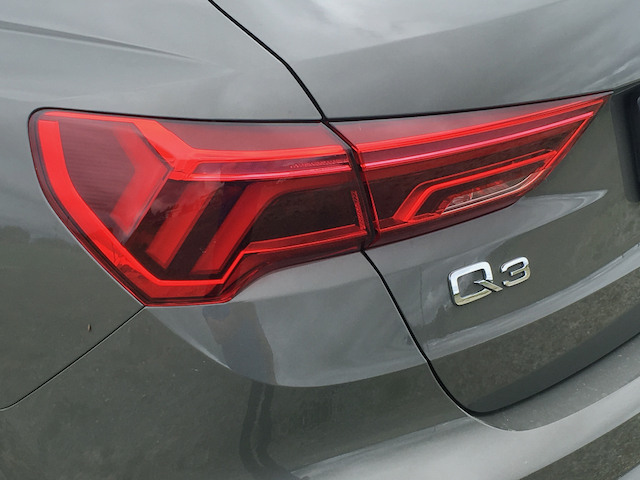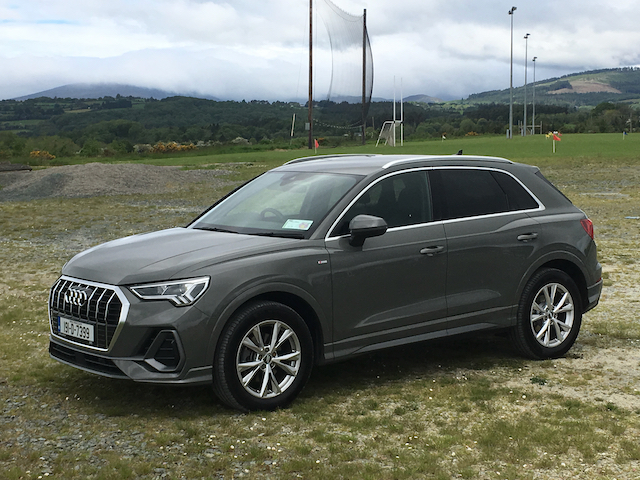29/06/2020 Audi has made the compact and excellent Q3 less SUV-like with a new Sportback version – why?
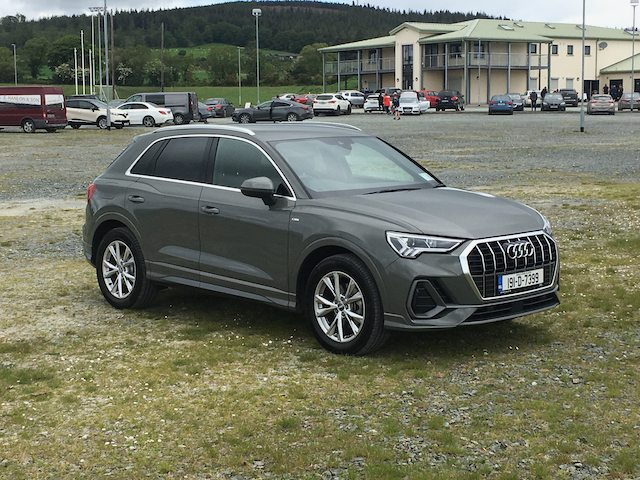
There’s a few reasons car firms do this. The primary one is to keep buyers from straying from their brand by offering something that bridges a gap between models e.g. Don’t want another Q3 but not ready for a Q5? Try a Q3 Sportback. Another reason is it is easy to do – as the platform the niche model is built on, its interior, engines etc. are already there in the Q3 in this case with just a few body alterations needed. Lastly, in the long term the car industry wants to wean us off blocky SUVs ‘the aerodynamic bricks of the motoring world’ in to sleeker crossovers!
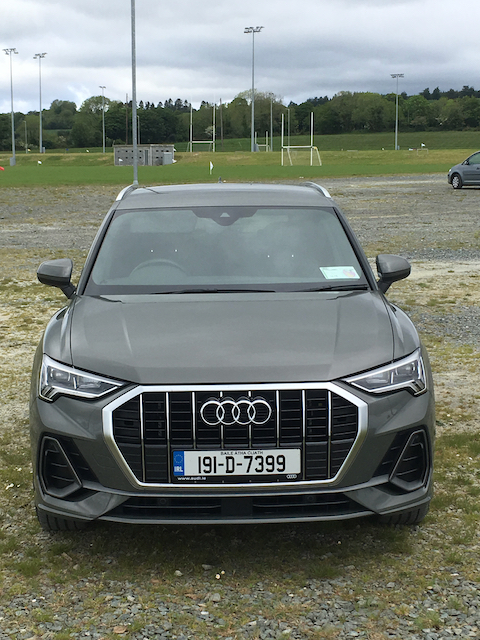
Our test car’s shape is interesting and delivers a surprising amount of road presence with its sloping tailgate and big bulging wheel arches and body creases. The Q3 Sportback is slightly narrower than the Q3 and has a more sloping windscreen too. Sportback’s body is also lower (1556mm v 1585mm) and slightly longer at 4,500mm than its stable-mate. Boot capacity is the same at 530 litres despite the slant of the tailgate. One thing that made our car particularly striking was its Dew Silver’ paint colour that to our eyes is unique among mainstream motors at the moment. As with Q3, SE and S Line are the grades available with the S Line looking that bit more sporty. Entry models ride on 18 inch alloys with 19s standard on the S Line. Our S Line test car had a number of optional extras with the 20″ 5 twin spoke alloys the best addition (€1,890). We also liked the rear-view camera and the flat bottomed steering wheel that gives the driver a sportier sensation.
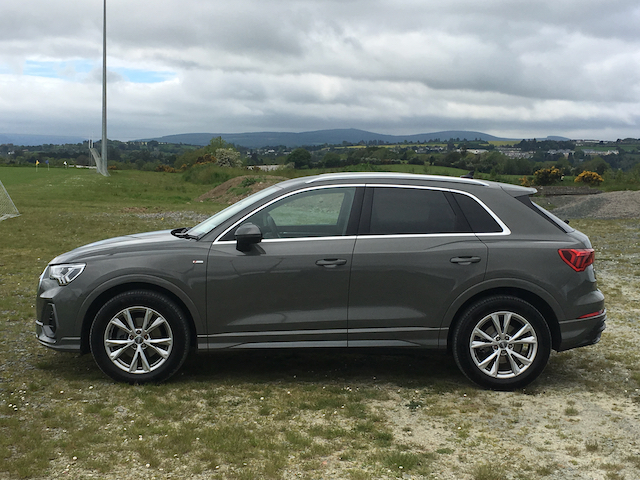
The workings of the Sportback mirror the Q3 – so front wheel drive is standard with ‘quattro’ (Audi uses a small q these days) all wheel drive versions available for a premium. Our car is a 35 TDI – deciphered from Audi speak that means it has a four-cylinder 2 litre 150hp/340nm diesel engine under the bonnet. Power to the front wheels is delivered via a smooth S-Tronic automatic gearbox (a manual six-speed is standard on quattro versions). Performance figures say: 0-100km/h takes 9.2 seconds – but feels quicker, top speed is 207km/h and the average fuel consumption is quoted at 4.8 l/100km NEDC (6.4 WLTP).

With the quattro system there is an optional electronically regulated ‘Sports differential’ that distributes variable amounts of drive force to each rear wheel. This makes the act of changing direction and the delivery of traction much more efficient and dynamic. Q3 Sportback petrol power comes in the form of a six-speed manual 1.5 litre, 150hp/250nm ’35 TFSI’ (FWD) from €41,400 – the standard Q3 costs from €40,400. A 2 litre S-Tronic quattro with 230hp/350nm ’45 TFSI’ cost from €51,715 (Q3 €50,715). Diesel power is limited to the 35 TDI. Pricing for the SE starts at €43,565 for the S-Tronic front wheel drive model (Q3 €42,580). The quattro 35 TDI comes with a six-speed manual and costs from €46,910 (Q3 €45,865) for the SE.

The driving experience Q3 Sportback delivers is competent, undemanding and fairly ‘dynamic’ – it’s a legal requirement to use dynamic in a review of a German car ;-). Behind the wheel the car feels tight at any speed. On the go and the open road it is quite quiet inside too! Steering is a little numb and light. At low speed the diesel engine can be a little intrusive. For real thrills the special order RSQ3 Sportback with its flared wheel arches, 21 inch alloys and 400hp/480nm 2.5-litre TFSI engine sounds like a serious machine. With 0-100km/h taking just 4.5 seconds it is guaranteed to be a huge amount of fun, it will be a rare sight on our roads, definitely one for enthusiasts.
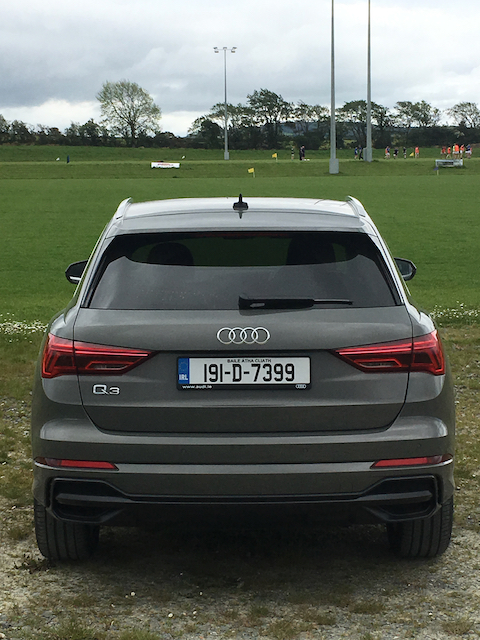
The Q3 Sportback 35TDI S Line starts at €46,765. Sitting on those big wheels and with a few extras totalling €6,982, oh and that cool paint (€1,018), our test car weighed in at €54,765. The Q3 is perhaps my favourite Q model although the Q2 and Q8 are pretty good too. Audi Q3 Sportback rivals are thin on the ground with the BMW X4 and Mercedes-Benz GLC Coupe the other premium SUV Coupe offerings.
